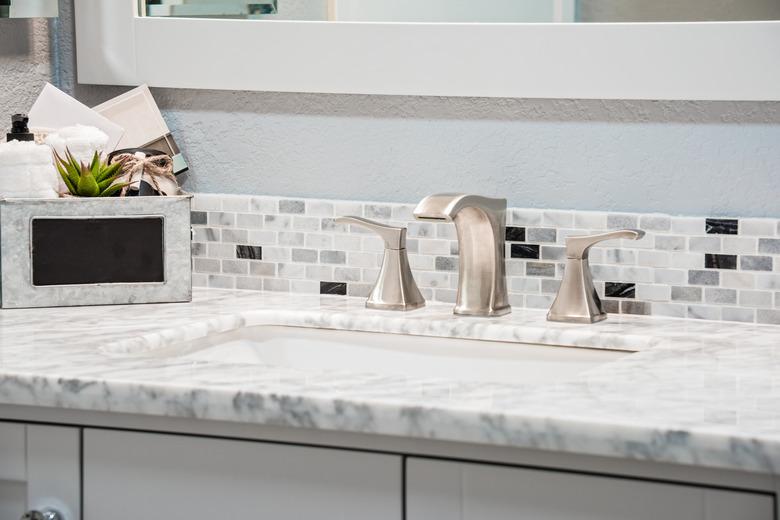What Kind Of Glue Holds A Sink In A Vanity?
Installing a vanity requires a strong glue to hold the sink to the countertop. More important, the glue needs to keep water out to protect the countertop from rot and swelling. This means a waterproof, watertight substance with bonding power is the choice professionals make and the best solution for fastening your bathroom sink to your counter.
Tip
Depending on the type of sink you have, you will use one of several types of adhesives. Most bathroom sinks are attached using silicone caulking compound made for sinks. This bonds to ceramic and laminate. Granite sinks call for glue made for granite bonding. For undermount, you'll need to rely on the manufacturer's recommendation.
Silicone Sink Caulking
Silicone caulking seals sinks to the countertop and prevents water intrusion. Today, a special type of silicone caulking compound is manufactured specifically for sink installation.
This sink caulking material has water repellent properties and it bonds to ceramic and countertop laminate. It is the most commonly used glue to install a sink. This product is also called bathroom or tub and shower caulking. Either one seals and protects your counter from water.
Glue for Granite Sinks
Mounting a vanity sink to a granite bathroom countertop requires another type of glue, one that bonds to granite and the sink surface. Advanced adhesives, made of silicone specifically for granite countertops, are the choice here.
Silicone caulking is still used on rimmed sink installations to seal out water. It acts as a protective barrier. The main focus in a rimmed vanity sink installation on granite is keeping water from dripping onto the cabinet below, anyway. Since granite is solid rock, water intruding into the counter is not an issue. The mounting clips secure the sink to the counter.
Adhesive for Undermount Sinks
An undermount vanity sink requires a very special adhesive. It must seal and bond very well while supporting the weight of the full sink. It is very important to seal the sink properly to the countertop, because if the supports weaken and the sink separates from the counter, water will leak into your cabinets.
It also jeopardizes the stability of the sink and if it drops this has potentially disastrous effects on the plumbing beneath it. For this reason, only use manufacturer-recommended undermount sink adhesives and sealants designed for your counter surface and sink material, on any installation. Anything else is not strong enough for this type of project.
Rimmed Sink Installation
A typical rimmed sink installs in a vanity with a few metal clips and screws mounted under the sink. The clips hold the sink in place. Plumber's putty is usually applied around the edge of rimmed sinks to keep out water, or a silicone bead is run around the bottom or seam of the rimmed sink and counter.
Undermount sinks mount using metal clips that screw into the counter surface with special anchors. The adhesive for the undermount sink is usually part of your installation package because each one is formulated specifically to bond your sink material to a granite counter.
